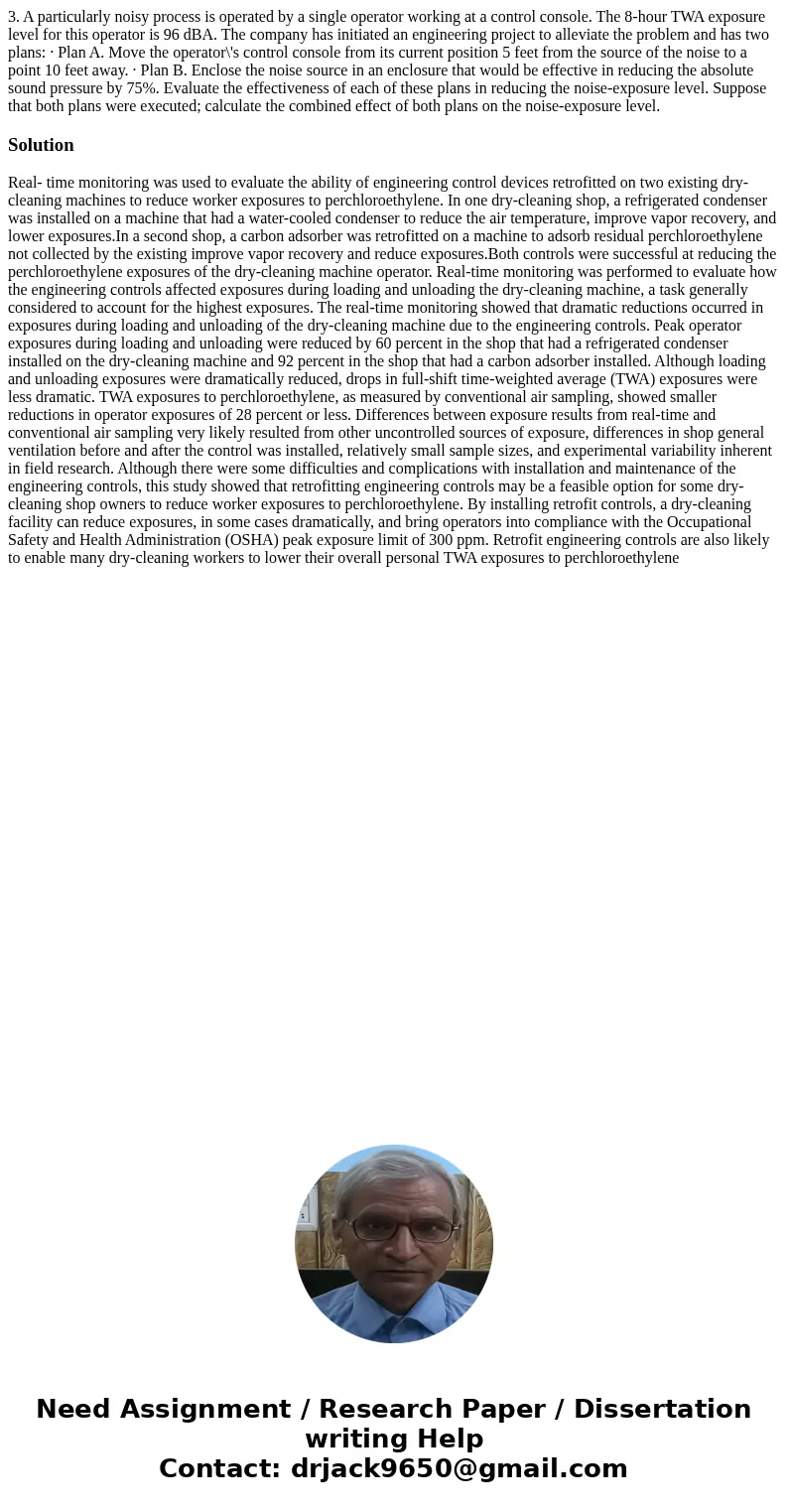3 A particularly noisy process is operated by a single opera
3. A particularly noisy process is operated by a single operator working at a control console. The 8-hour TWA exposure level for this operator is 96 dBA. The company has initiated an engineering project to alleviate the problem and has two plans: · Plan A. Move the operator\'s control console from its current position 5 feet from the source of the noise to a point 10 feet away. · Plan B. Enclose the noise source in an enclosure that would be effective in reducing the absolute sound pressure by 75%. Evaluate the effectiveness of each of these plans in reducing the noise-exposure level. Suppose that both plans were executed; calculate the combined effect of both plans on the noise-exposure level.
Solution
Real- time monitoring was used to evaluate the ability of engineering control devices retrofitted on two existing dry-cleaning machines to reduce worker exposures to perchloroethylene. In one dry-cleaning shop, a refrigerated condenser was installed on a machine that had a water-cooled condenser to reduce the air temperature, improve vapor recovery, and lower exposures.In a second shop, a carbon adsorber was retrofitted on a machine to adsorb residual perchloroethylene not collected by the existing improve vapor recovery and reduce exposures.Both controls were successful at reducing the perchloroethylene exposures of the dry-cleaning machine operator. Real-time monitoring was performed to evaluate how the engineering controls affected exposures during loading and unloading the dry-cleaning machine, a task generally considered to account for the highest exposures. The real-time monitoring showed that dramatic reductions occurred in exposures during loading and unloading of the dry-cleaning machine due to the engineering controls. Peak operator exposures during loading and unloading were reduced by 60 percent in the shop that had a refrigerated condenser installed on the dry-cleaning machine and 92 percent in the shop that had a carbon adsorber installed. Although loading and unloading exposures were dramatically reduced, drops in full-shift time-weighted average (TWA) exposures were less dramatic. TWA exposures to perchloroethylene, as measured by conventional air sampling, showed smaller reductions in operator exposures of 28 percent or less. Differences between exposure results from real-time and conventional air sampling very likely resulted from other uncontrolled sources of exposure, differences in shop general ventilation before and after the control was installed, relatively small sample sizes, and experimental variability inherent in field research. Although there were some difficulties and complications with installation and maintenance of the engineering controls, this study showed that retrofitting engineering controls may be a feasible option for some dry-cleaning shop owners to reduce worker exposures to perchloroethylene. By installing retrofit controls, a dry-cleaning facility can reduce exposures, in some cases dramatically, and bring operators into compliance with the Occupational Safety and Health Administration (OSHA) peak exposure limit of 300 ppm. Retrofit engineering controls are also likely to enable many dry-cleaning workers to lower their overall personal TWA exposures to perchloroethylene

 Homework Sourse
Homework Sourse